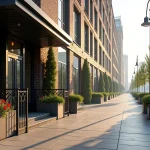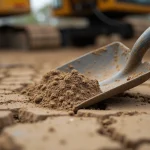Are you looking to elevate your London home’s interior with timeless elegance? Cove Cornice installations have surged by 23% across London properties in 2025, according to the Royal Institute of British Architects. These architectural features create seamless transitions between walls and ceilings while adding sophisticated character to any room. Premium cove cornices not only enhance your property’s aesthetic appeal but can increase home values by up to 8% in London’s competitive market.
Why These Architectural Elements Make Perfect Sense for Period Properties
London’s architectural heritage spans centuries, from Georgian terraces to Victorian mansions, and each era brought distinctive design elements that define the city’s character today. Cove cornices emerged as a sophisticated solution that perfectly bridges the gap between wall and ceiling, creating the gentle curved transitions that complement period properties’ proportions.
This might interest you : Discover top tree surgeon courses in kent today!
These architectural features aren’t merely decorative additions—they’re integral to how period properties were originally conceived. The graceful curves of cove cornices soften harsh angles while adding visual height to rooms, a particularly valuable trait in London’s traditionally compact living spaces. Properties featuring authentic or well-matched architectural moldings consistently command higher market values, as they preserve the historical integrity that buyers actively seek.
For London homeowners, investing in quality cove cornices represents both aesthetic enhancement and practical property improvement. Local expertise becomes crucial when selecting appropriate profiles and materials that harmonize with existing period features, ensuring renovations enhance rather than compromise a property’s authentic character and long-term appeal.
Topic to read : Top deals on super sonico figures with free shipping options
Choosing the Perfect Style for Your London Home
London’s diverse architectural landscape demands thoughtful consideration when selecting cove cornices. Each property type presents unique opportunities to enhance period features while respecting the building’s original character.
The material you choose significantly impacts both aesthetics and longevity. Here are the most popular options for London homes:
- Plaster cornices offer authentic period appeal, perfect for Victorian and Edwardian properties seeking traditional elegance
- Polyurethane alternatives provide moisture resistance ideal for bathrooms and kitchens in older London homes
- Lightweight composite materials suit modern apartments where structural considerations matter
- Timber cornices complement contemporary designs while adding warmth to minimalist interiors
Victorian terraces benefit from ornate, detailed profiles that echo the era’s decorative sensibilities. Edwardian homes work beautifully with slightly simpler designs that maintain elegance without overwhelming the space. Modern London apartments often suit clean, geometric profiles that create definition without competing with contemporary fixtures.
Consider your room’s proportions carefully. High ceilings can accommodate elaborate designs, while lower ceilings require more subtle profiles to avoid visual compression.
Professional Installation: What to Expect from Start to Finish
Professional cove cornice installation begins with a comprehensive consultation where specialists assess your space and discuss design preferences. Experienced installers measure each room precisely, accounting for ceiling height variations and architectural quirks common in London properties. This initial assessment ensures accurate material calculations and helps identify any preparation work needed.
The preparation phase typically involves protecting furniture and flooring before carefully cleaning and priming wall and ceiling surfaces. Professional teams work systematically, cutting each piece of cornice to exact measurements while maintaining consistent angles at corners and junctions. Most standard rooms require one to two days for complete installation, though period properties with intricate details may need additional time.
Expert installers focus on achieving seamless joints and perfect alignment, using specialized tools and techniques that ensure longevity. The finishing process includes careful sanding, filling any minor gaps, and applying primer before your chosen paint finish. Professional installation guarantees structural integrity and aesthetic perfection that DIY approaches simply cannot match, transforming your space with architectural elegance that lasts for decades.
Investment Guide: Understanding Costs and Value
Investing in decorative molding represents more than an aesthetic upgrade—it’s a strategic enhancement that significantly impacts your property’s value and appeal. Quality installation typically ranges from £15-45 per linear foot, depending on several key factors that determine the overall investment.
Project complexity plays the primary role in determining costs. Simple designs in standard-sized rooms require less time and materials, while intricate patterns or rooms with unusual angles demand specialized expertise. Material selection also influences pricing, with traditional plaster offering premium aesthetics at higher costs, while modern alternatives provide excellent value with reduced installation time.
The return on investment consistently exceeds initial expenditure. Professional molding installation typically adds 3-5% to your property’s market value, particularly in London’s competitive real estate landscape. Beyond monetary returns, you’ll enjoy enhanced living spaces that feel more refined and architecturally cohesive.
Consider this a long-term investment in your home’s character and functionality. Quality installation lasts decades with minimal maintenance, delivering ongoing satisfaction while distinguishing your property in an increasingly competitive market where architectural details make lasting impressions on potential buyers.
Local Expertise: Why London Properties Require Specialized Knowledge
London’s architectural landscape presents unique challenges that demand specialized expertise. From Victorian terraces in Kensington to Georgian townhouses in Bloomsbury, each property type requires specific knowledge of historic construction methods and preservation requirements.
Listed buildings across London often carry strict conservation guidelines that affect molding installation and renovation work. Properties built before 1919 may have lime mortar walls, horsehair plaster, or other period-specific materials that require careful handling. A local specialist understands these nuances and can navigate the complexities of working with heritage structures.
Borough-specific regulations add another layer of complexity. Camden Council’s requirements differ significantly from those in Westminster or Southwark. Local contractors maintain relationships with conservation officers and understand the approval processes for different areas, ensuring your project complies with all necessary regulations.
Working with London-based professionals also means access to suppliers who stock period-appropriate materials and can match existing architectural details. This local network ensures authentic restoration work that preserves your property’s character while meeting modern standards.
Your Questions About Cove Cornice Installation
What is the cost of installing cove cornices in London?
Cove cornice installation costs in London typically range from £15-35 per metre, depending on materials, complexity, and room size. Premium period-style designs and larger properties may command higher rates.
How do I choose the right cove cornice style for my home?
Consider your property’s architectural period, ceiling height, and existing décor. Victorian homes suit ornate profiles, while contemporary spaces benefit from cleaner, minimalist designs that complement modern aesthetics.
Are there professional cove cornice installers in London?
Yes, London has numerous qualified installers specializing in decorative moulding. Look for professionals with experience in period properties and portfolio examples that match your desired style and quality standards.
What materials are best for cove cornices in period properties?
Plaster and fibrous plaster remain ideal for period properties, offering authentic textures and durability. Polyurethane provides cost-effective alternatives while maintaining traditional appearances in conservation areas with restrictions.
How long does cove cornice installation take in a typical London home?
Most residential installations complete within 1-2 days per room, depending on complexity and preparation required. Larger properties or intricate period-accurate reproductions may require additional time for proper finishing.











